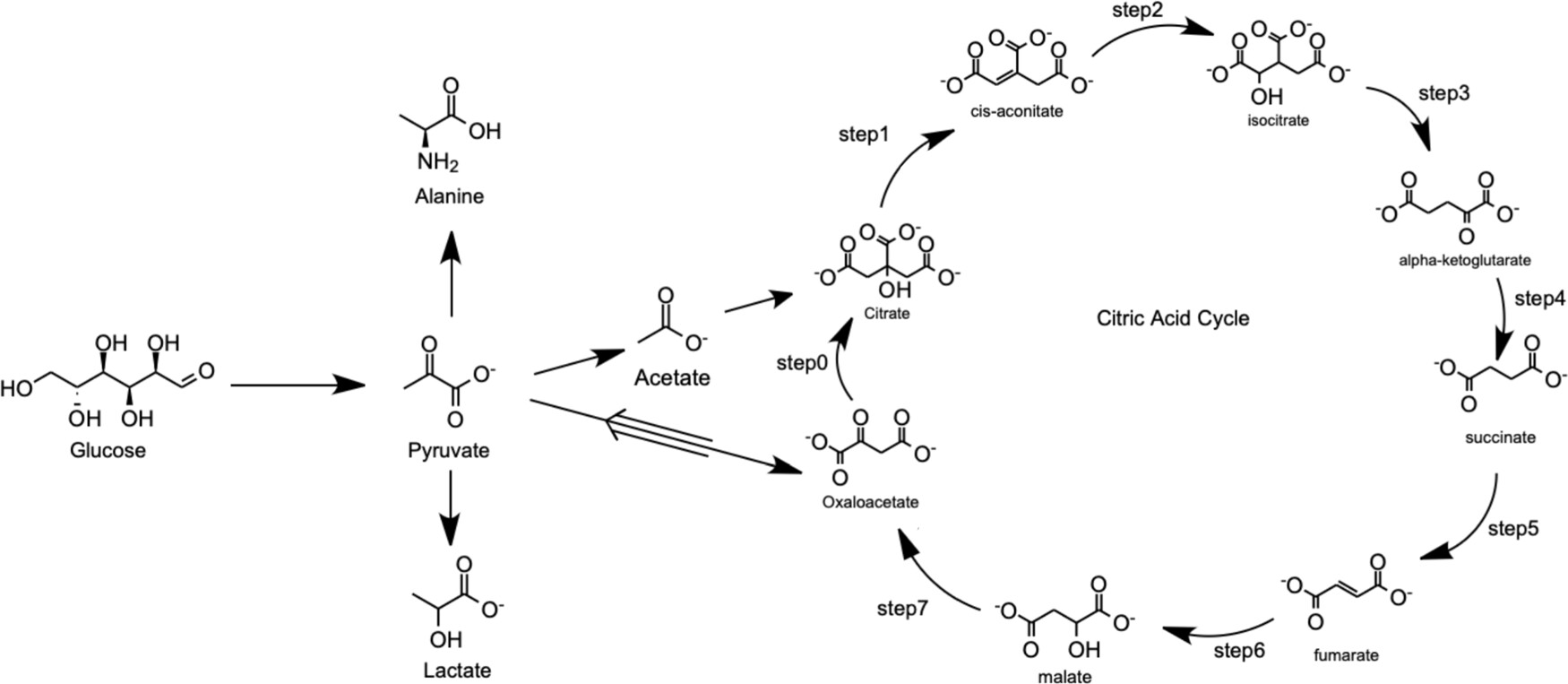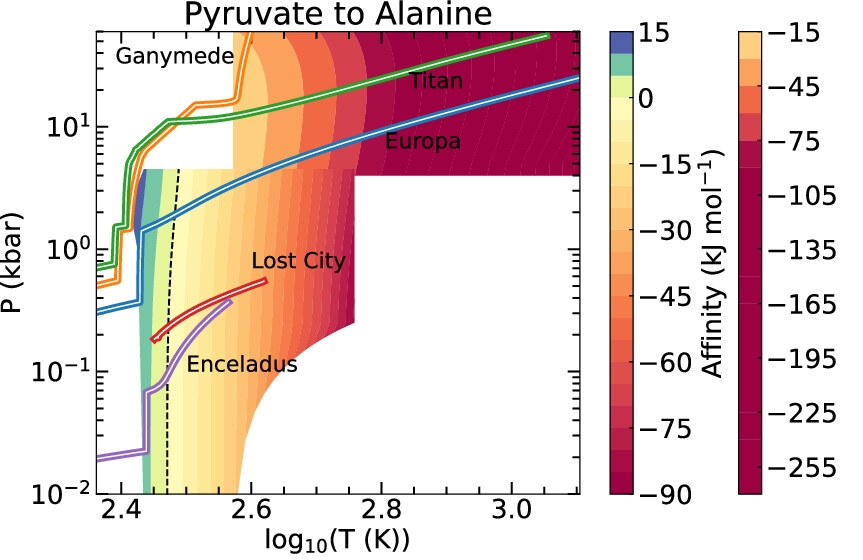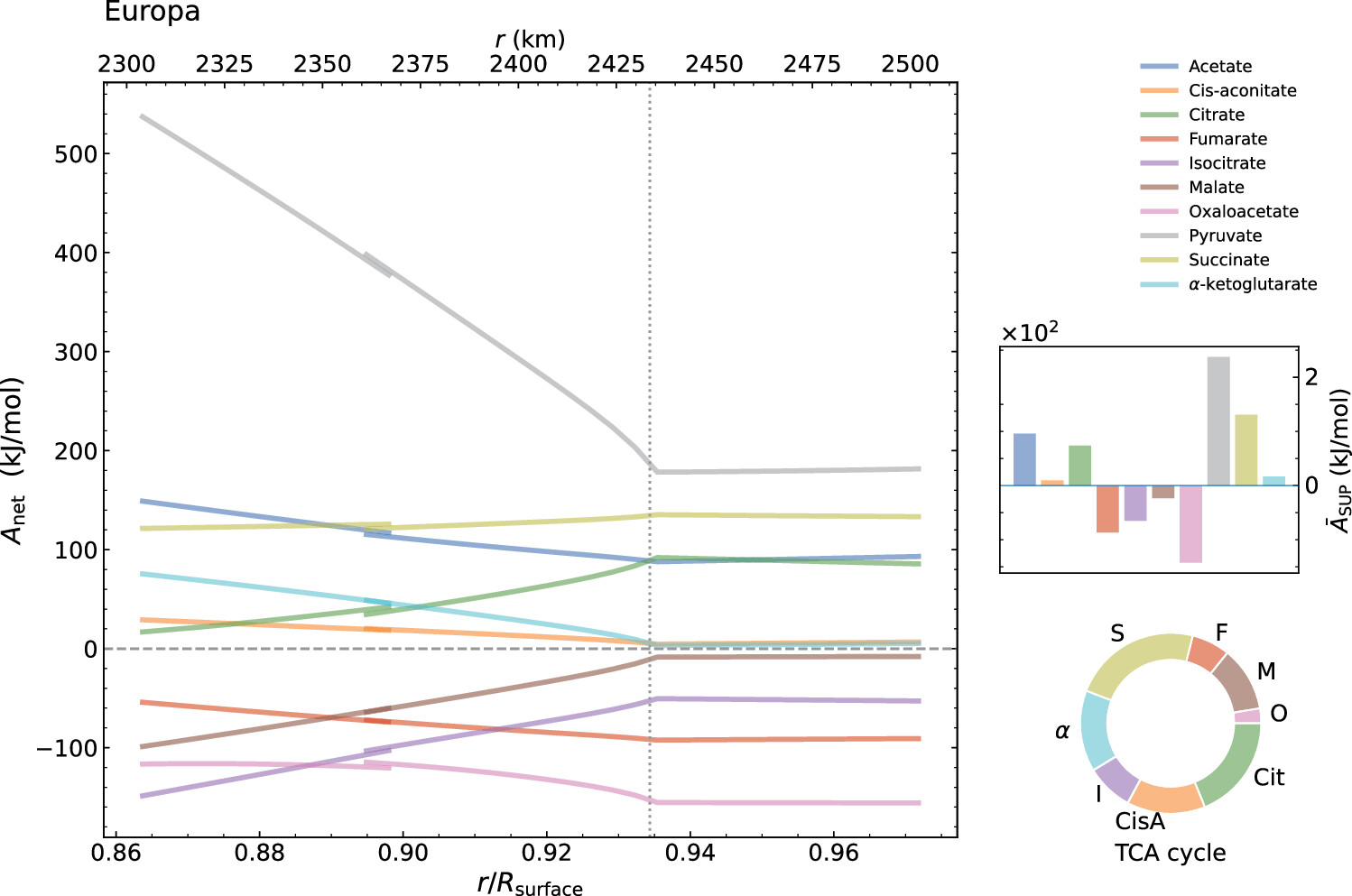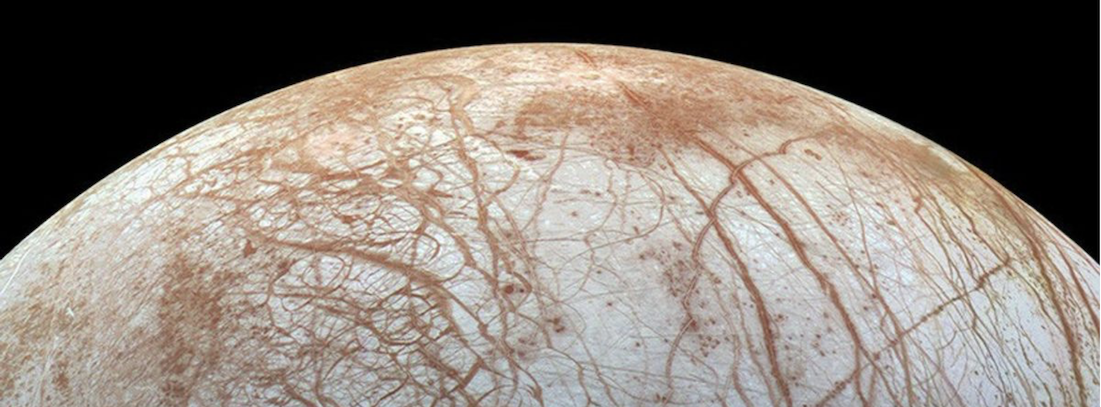Astrobiology
This page is about our recent attempts on modelling the astrobiological potential of the major ocean worlds in our Solar System.
Studying proto-metabolic pathways under dark waters (2025)



In an interdisciplinary collaboration involving JPL/Caltech and Istanbul Technical University, we made thorough tests of the DEWPython code developed at the JPL, which assembles the Deep Earth Water and the SUPCRT models typically used for Earth’s oceans and interior, into one framework. These models calculate the equilibrium properties and energetics of reactions involving aqueous or gas forms of hundreds of chemical species as well as minerals, using available experimental data. In this study, we suggested a simple estimator for chemical affinities of each reaction node (species) in a reaction network, as a function of the depth under the crusts of ocean worlds (see the middle panel). We carried out a first analysis of the stability of the citric-acid cycle and a connected small prebiotic network (top figure) corresponding to structural profiles of Enceladus, Europa, Ganymede and Titan (middle figure). Integrating the chemical affinities of edge reactions around each node species radially through the aqueous interiors of ocean worlds, we estimated the net affinity of that species under the thermodynamic conditions of the object. This essentially non-equilibrium thermodynamic calculation provides an ‘instantaneous’ total affinity of a set of connected reactions, based on given (estimated) concentrations of all chemical species involved. The resulting radial profiles of the net species affinity for Europa are shown as an example in the bottom figure. Here, we see that some of the species of the citric-acid cycle are energetically favoured, some others are rather unstable. The part to the right of the vertical line corresponds to the sub-crustal ocean of Europa, whereas the left part is the ocean crust and the upper mantle, where water can be in liquid phase, so that the considered reactions can proceed.
Reference
Işık, S., Melwani Daswani, M., Işık, E., Weber, J., Olgun Kiyak, N. 2025, ACS Earth & Space Chem. 9 (6), 1392
Press Release at Istanbul Technical University
A Thermodynamic Perspective on Potential Life in Icy Ocean Worlds
